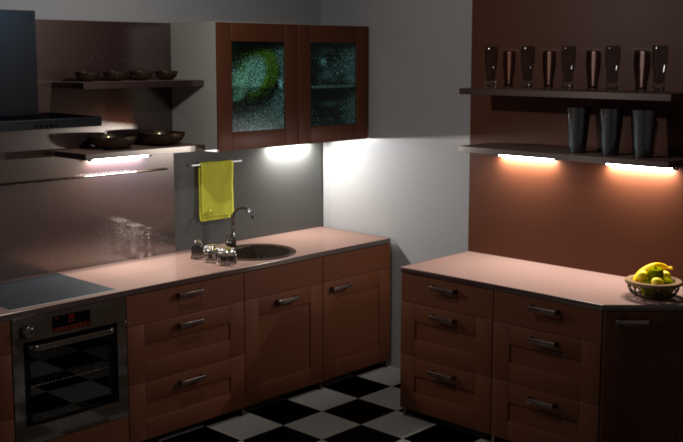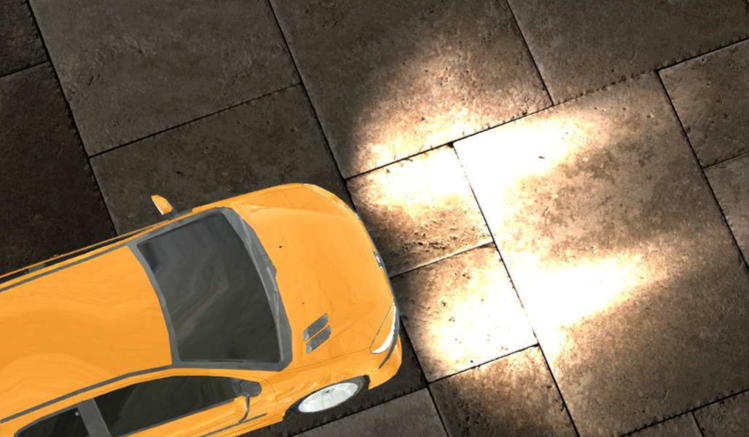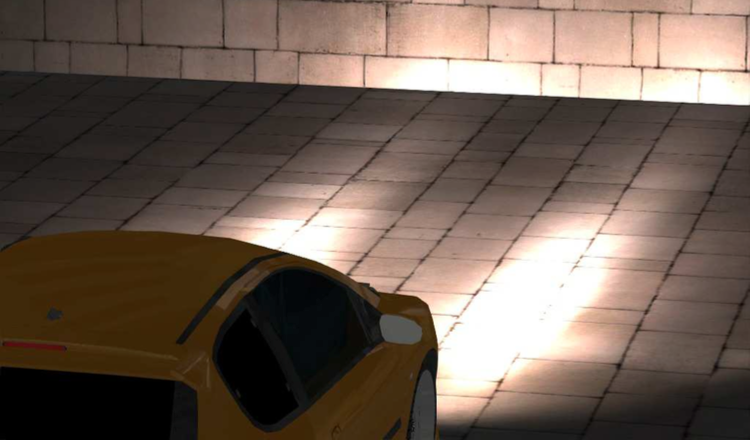Section: New Results
Analysis and Simulation
Parametrization of BRDFs
Opaque materials are represented in computer graphics by Bi-directional Reflectance Distribution Functions (BRDF), which are 4D functions of light and view direction. Dealing with such a high dimensionality is problematic for the modeling and rendering of material appearance. The choice of a BRDF parametrization greatly simplifies this task by identifying the axis where most variations occur in common opaque materials. The 4D parametrization of Rusinkiewicz [86] is classically used in graphics, in particular because of its direct connection to micro-facet theory. Alternative parametrization by Neumann et al. [71] and Stark et al. [91] have been proposed, but are restricted to 2D parametrizations, and hence a restricted class of materials.
We have extended the work of Neumann et al. [71] and Stark et al. [91] to a pair of 4D BRDF parameterizations with explicit changes of variables. Revealing some of their mathematical properties and relationships to Rusinkiewicz' parametrization allows us to better understand their benefits and drawbacks for representing measured BRDFs. Our preliminary study suggests that the alternative parametrization inspired by Stark et al. [91] is superior, and should thus be considered in future work involving BRDFs.
New BRDF Model and Diffraction Effects identification
Finding the appropriate BRDF model, with meaningful physical parameters, that can represent accurately measured data remains a challenging task. In [20] , we show that two different physical phenomena are present in measured reflectance: reflection and diffraction. Taking both into account, we present a reflectance model [24] that is compact and a very good approximation (cf. Figure 8 ) of measured reflectance. Designers can act on model parameters, related to surface properties, to create new materials.
|
Statistical analysis of BRDFs
On the one hand, a BRDF is a complex 4D function, which should ensure reciprocity and energy conservation laws. On the other hand, when computing radiance reaching the eye from a surface point, the view direction is held fixed. In this respect, we are only interested in a 2D BRDF slice that acts as a filter on the local environment lighting. In [21] , our goal is to understand the statistical properties of such a filter as a function of viewing elevation. To this end, we have conducted a study of measured BRDFs where we have computed statistical moments for each viewing angle. We show that some moments are correlated together across dimensions and orders, while some others are close to zero and may safely be discarded. Our study opens the way to novel applications such as moment-based manipulation of measured BRDFs, material estimation and image-based material editing. It also puts empirical and physically-based material models in a new perspective, by revealing their effect as view-dependent filters.
Importance Sampling of Real Light Sources
Realistic images can be rendered by simulating light transport with Monte Carlo methods. The possibility to use realistic light sources for synthesizing images greatly contributes to their physical realism. Among existing models, the ones based on light fields are attractive due to their ability to capture faithfully the far-field and near-field effects as well as their possibility of being acquired directly. Since acquired light sources have arbitrary frequencies and possibly high dimensions (4D), using such light sources for realistic rendering leads to performance problems. We have investigated [12] how to balance the accuracy of the representation and the efficiency of the simulation (cf. Figure 9 ). The work relies on generating high quality samples from the input light sources for unbiased Monte Carlo estimation [67] . This is a foundation work that has leaded to new sampling techniques for physically-based rendering with light field light sources. The results show that physically accurate rendering with realistic light sources can be achieved in real time.
|
Exact Relations between Wave and Ray Aberrations
The aberrations of an optical system can be described in terms of the wave aberrations, defined as the departure from the ideal spherical wavefront; or the ray aberrations, which are in turn the deviations from the paraxial ray intersections measured in the image plane. The classical connection between the two descriptions is an approximation, the error of which has, so far, not been quantified analytically.
We derive [13] exact analytical equations for computing the wavefront surface, the aberrated ray directions, and the transverse ray aberrations in terms of the wave aberrations (a.k.a., Optical Path Difference) and the reference sphere. We introduce precise conditions for a function to be an OPD function, show that every such function has an associated wavefront, and study the error arising from the classical approximation. We establish strict conditions for the error to be small. We illustrate our results with numerical simulations. Our results show that large numerical apertures and OPD functions with strong gradients yield larger approximation errors.






